OCD hay fever has been an epidemic in our area this year. A weather pattern of rain during late spring and early summer delayed hay-baling. Not that we’re complaining about rain, not after the last two summers of drought conditions! Even with the rains we’ve had, we’re still behind the average and most ponds are not yet full. So we’ll take that rain. We just needed a few days of “hay weather,” which we finally received.
In a couple of earlier posts, I described the baling process for the big round bales, or “jellyrolls” as one friend called them: “Catering Jellyrolls” posted 1/22/14, and “June’s Jellyroll Jaunt—Loading and Transporting” posted 3/2/14. The steps involved in baling the little square bales are the same—swath or cut, rake, bale and transport—but some of the equipment used is different.
First, the swather cuts the grass and swaths it into rows. This swather is used for both round and square bales.
Second, raking turns the rows of hay over so the bottom will dry and also fluffs them up so they feed into the baler. This is a different type of rake than the one used for round bales.
Third, the square baler picks up the cut and raked hay, forms the bale, ties it with wire and pushes it out the back. (I had to take several shots to get the one I wanted with the bale being ejected but not yet on the ground, which involved trotting all over the hay field!)
This is a view of our hay field after baling. No, I wasn't holding the camera at an angle. The field actually slopes downhill from a terrace I was standing on above the bales. More about terraces and how not to drive over them below!
Fourth, loading and stacking by hard-working young guys like these enable us to continue putting up square bales.
Finally, the bales are off-loaded into the barn. A neighbor bought 100 bales from us and this was the scene at his barn.
1. I have to sit on the edge of the seat because the seat adjustment mechanism is broken and the seat position is set for someone about six feet tall—I’m five feet, six inches; and,
2. The hay fields are terraced to prevent erosion.
The trick is to drive over the terraces at an angle, not straight up one side and down the other. The latter method guarantees becoming high-centered, leaving the truck straddled across the top of the terrace, wheels off the ground, teeter-tottering back and forth. Meanwhile, my stomach plummets to the floorboard, due to motion sickness compounded by terror. The potential rescue operation entails being towed off the terrace by a much larger vehicle, risking damage to both truck and trailer. On the other hand, if I drive over terraces at too sharp an angle I risk spilling the trailer contents: hay and crew.
I’m proud to say I only high-centered once, and it was the trailer not the truck. Bill was still baling in another area of the field, so the neighbor helping us coached me on how to get off the terrace by alternately rolling forward and backward, thereby rocking myself off the terrace. No teeter-tottering and no towing!
In these pictures, Bill demonstrates how to navigate terraces without high-centering.

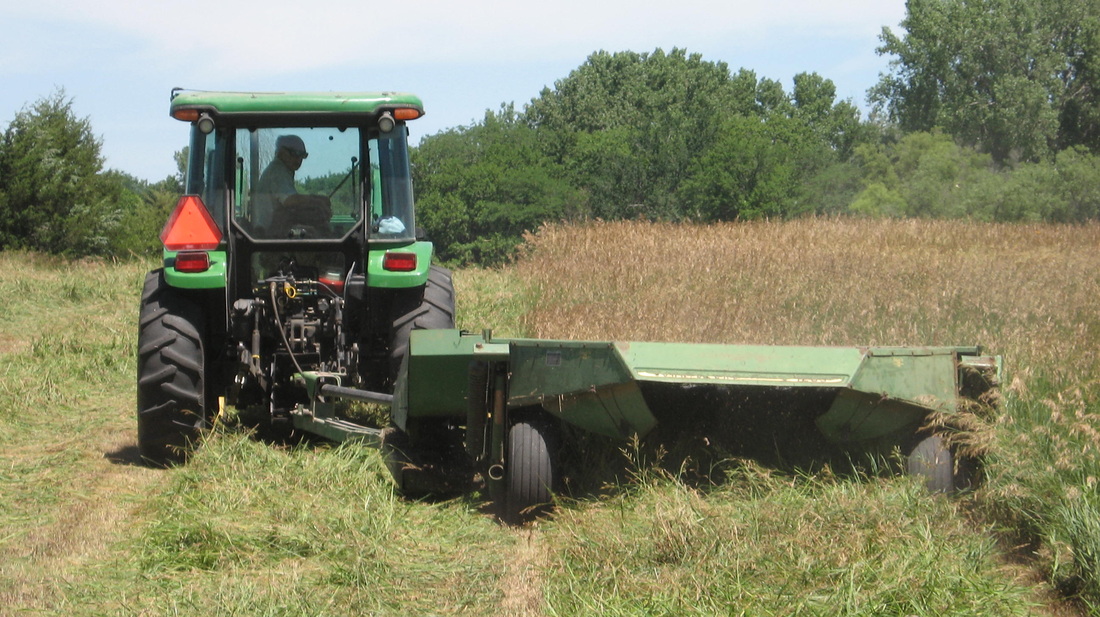
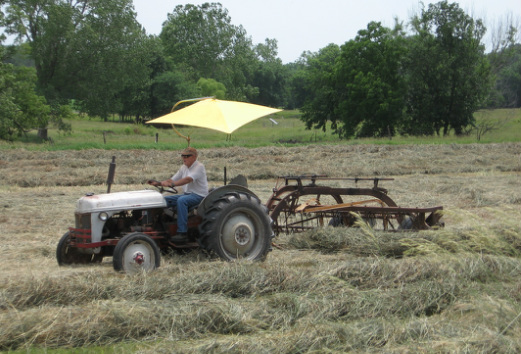
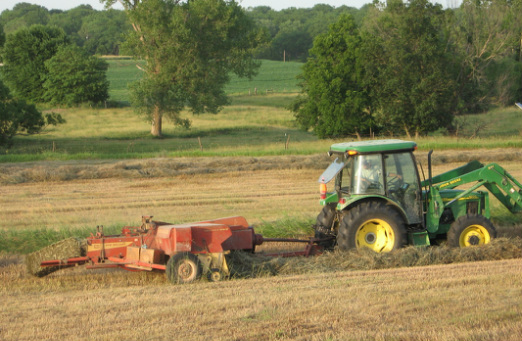
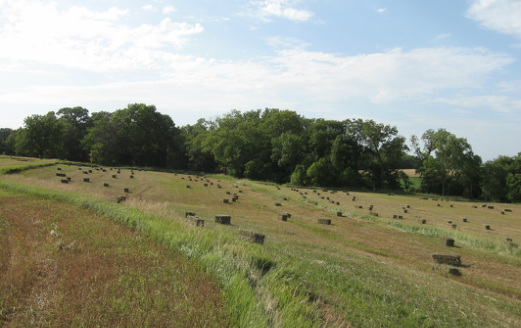
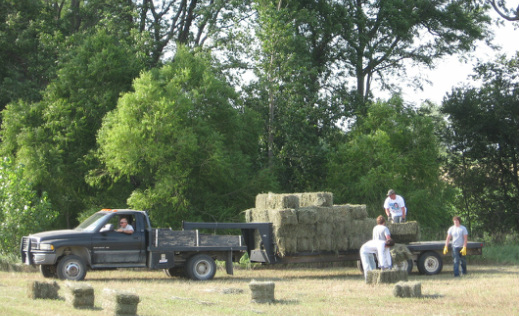
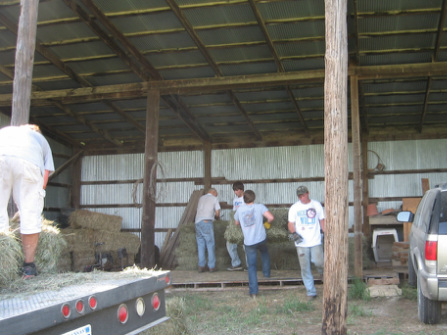
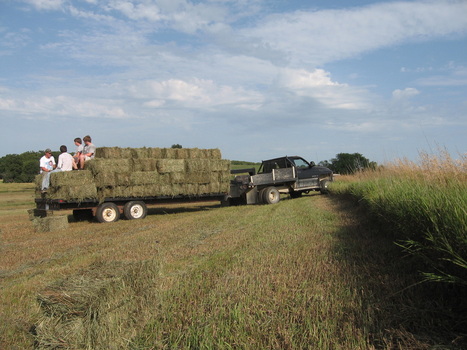
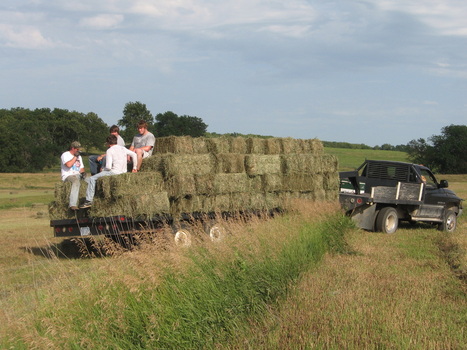
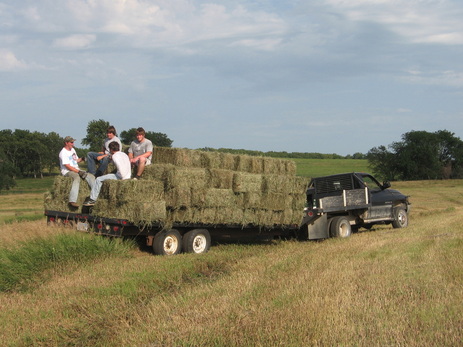
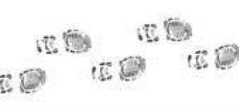
 RSS Feed
RSS Feed